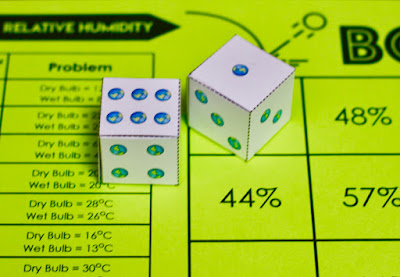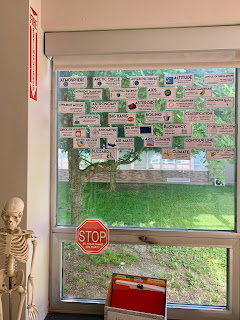Partner Games
I want to start off by saying that Partner Games have changed my classroom for the better!
Partner games are perfect for practicing science skills. Because there are only two students working together, both students are working, and none are left out. There is also instant accountability as the partners (when chosen appropriately) hold each other accountable.
The partner games I use (and the ones I am sharing with you) are very consistent. This allows me to teach my students the directions and expectations for the five types of games at the beginning of the year. Then, I can use those same partner games all year long with different math content and skills, and my students immediately know what to do.
Let’s take a look at my partner games.
Roll and Calculate
To play this game the students take turns rolling the 3 dice and calculating the gradient. Since each pair of students has different numbers they cannot copy from their neighbors.
Each student double checks their partner's work and holds them accountable.
Click here for the Roll and Calculate Gradient Game
Bounce
To play the game, the students need two different colored counters (or the counters that have one color on each side) and two dice. This game is SO easy to play and so much fun.
Here are the directions:
Objective: To have the most squares covered by the end of the game
Directions:
1. Roll a pair of dice, and determine the sum of the numbers rolled.
2. Find the number that matches the sum of the numbers you rolled.
3. Answer or solve the task.
4. Find the answer or solution in one of the squares.
5. Place your marker on the square.
Other Important Information:
1. If another player rolls the same sum as you and gets the answer correct, he or she may “bump” your marker and place his or her marker on the square.
2. You can protect your square by rolling the same sum again and placing another marker on top of the existing one. Two markers on the same square by the same player will protect that player from being bumped.
If you notice, there are eleven questions but sixteen squares. Some of the questions (the sums rolled most often by the two dice) have more than one answer the students can choose to put their counter on. When I introduce this game, we spend a few minutes talking about this to make sure the students don’t get confused and to discuss how you have to use a little strategy to decide what to do (protect your square by putting your counter on the square where your counter already is, trying to get the other square but not having either one of them be safe, or even bumping another player instead of putting your counter on a empty square.)
This game is the same as good old fashioned Tic Tac Toe is pretty self-explanatory; however, I do require both partners to solve the tasks. This keeps both students working and being held accountable. Here are the directions:
Directions:
1. Choose a game to begin.
2. Decide who will be X and who will be O.
3. Take turns selecting a box and solving the task inside the box.
4. Both partners solve the task. If the player who chose the task is correct, then he or she can mark it with his or her X or O.
5. Continue until a player covers three boxes (horizontally, vertically, or diagonally) or until all of the boxes are solved.
6. Repeat steps 1-5 with a new game.
Partner Sort
While this one is not necessarily a “game,” students still really enjoy it. For this partner activity, the students each have their own sort cards that they have to sort correctly. One thing that I did not include in the directions (for space reasons) is that I have my students initial their cards so I can use this to informally assess.
This final partner math game that we play is “Rock and Roll.” Here are the directions as written on the game:
Directions: Take turns rolling one die and choosing a task in the row that matches the number on the die. The first player to complete all of the tasks in a row or column wins that row or column. Continue until all tasks have been completed. If you roll a number for a row that has been completed, then you lose a turn.
Sometimes, I have my students forgo the race part and just play the game, attempting to cover as many spaces as they can. It really depends on my students that I have that year, but sometimes playing it that way (or letting them choose how they want to play it) works better.













Comments
Post a Comment